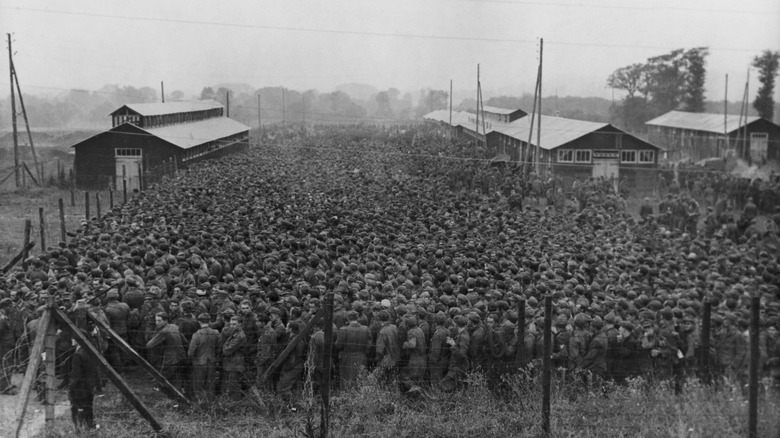The Surprising Truth About Axis Soldiers During World War II
World War II saw unprecedented levels of destruction, where civilians across Europe, Asia, and the Pacific were forced to face the consequences of total war. The human and material toll saw whole communities wiped from existence, with Nazi Germany and Imperial Japan sparing no expense in ensuring the suffering of those they invaded. This is a fate that the United States, bordered by allies and two oceans, largely avoided. However, this does not mean the American mainland escaped the war unscathed.
The West Coast, particularly the state of Oregon, was attacked by Japanese submarines and the seaplanes they carried, as well as balloon bombs drifting from Japan itself (via the Oregon Secretary of State). On the East Coast, German aggression was comparatively lesser, having come in the form of U-boat attacks and espionage. But few realize that thousands of German soldiers landed in America during the war not as passing attackers but as prisoners (via All That's Interesting).
Some German POWs in America tried tunnelling to freedom
Captivity within America's borders during World War II was not limited to the racially motivated internment of Japanese-Americans. According to the Smithsonian Magazine, over 400,000 Axis prisoners called America home until 1945. Their journey was precipitated by a shortage of space for prisoners in Britain, leading to shiploads of Germans being sent across the Atlantic. The POWs (excluding officers) were largely used to make up for wartime labor shortages on farms, for which they were seldom compensated. As they sometimes found themselves working alongside American civilians, cultural divides were often inadvertently bridged during this period. A minority of Germans were so impressed that they even returned to the United States after the war (via FDL Reporter).
Their captivity was a far cry from German and Soviet POW camps, with the Utah "Midnight Massacre" being one of the few violations of the Geneva convention held against them (via The Salt Lake City Tribune). Despite their decent treatment, many endeavored to try and tunnel out, mirroring the better-known Allied escape attempts from German captivity (via Sky HISTORY UK). But unlike the Allies, the Germans had no friendly countries to which they could escape. Their best option for returning home was to use a fake identification and board a ship, though none are known to have succeeded this way (via History Net). Meanwhile, Georg Gaertner was one of the only POWs known to have successfully evaded recapture, leaving his old life behind to start a new one in Colorado (via The Coloradoan).

